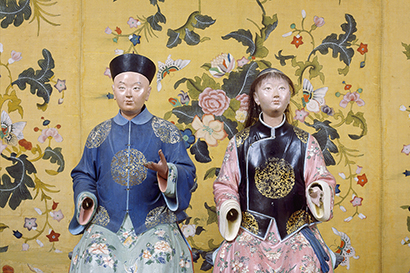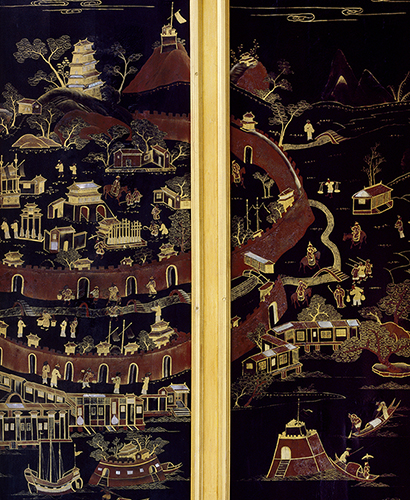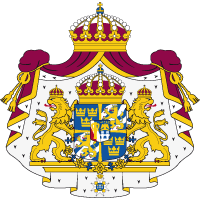History
The first pavilion, a prefabricated building, was erected here in 1753 as a birthday present to Queen Lovisa Ulrika. It was built in a Chinese-inspired style which at that time was the height of fashion in Europe.
The present building replaced it ten years later. The Chinese Pavilion combines the European Rococo with exotic allusions to China.
The lacquer-red wall and sculptural decorations of the façades testify to a close knowledge of Chinese architecture, but the main structure of the building is emphatically European.
Unique collections of Chinese and Japanese decorative arts, mainly from the 18th century, were assembled in this pavilion.
An inventory of the collections was compiled in 1777, when Drottningholm passed into the hands of the State.
European chinoiserie
Most of the items described in the inventory still occupy their original places, making the Chinese Pavilion one of the most authentic instances of 18th century European chinoiserie.
A number of other pavilions, also in the Chinese style, adjoin the main building.
One of them, the Confidence, is a dining room in which both the table and dumb-waiters were laid one floor below and then, on a signal being given from the dining room, hoisted up into position, enabling the royals to dine "en confidence" - without servants present.
Top image: Façade sketch by architect Carl Fredrik Adelcrantz, 1763. Ten years after it was first opened, the building was demolished as it had been ravaged by rot. The foundation stone for the present-day Chinese Pavilion was laid in 1763. Photo: Royalpalaces.se

The walls of the Yellow Cabinet are lined with mid-18th century painted Chinese silk wallpaper. The two dolls date from the same period, and represent a pair of officials. Photo: Alexis Daflos/Royalpalaces.se

The lacquered panels in the Yellow Room feature motifs from the Chinese trading port of Canton (Guangzhou), for which European merchant ships set sail. The panels were made in China in the mid-18th century. Photo: Alexis Daflos/Royalpalaces.se









